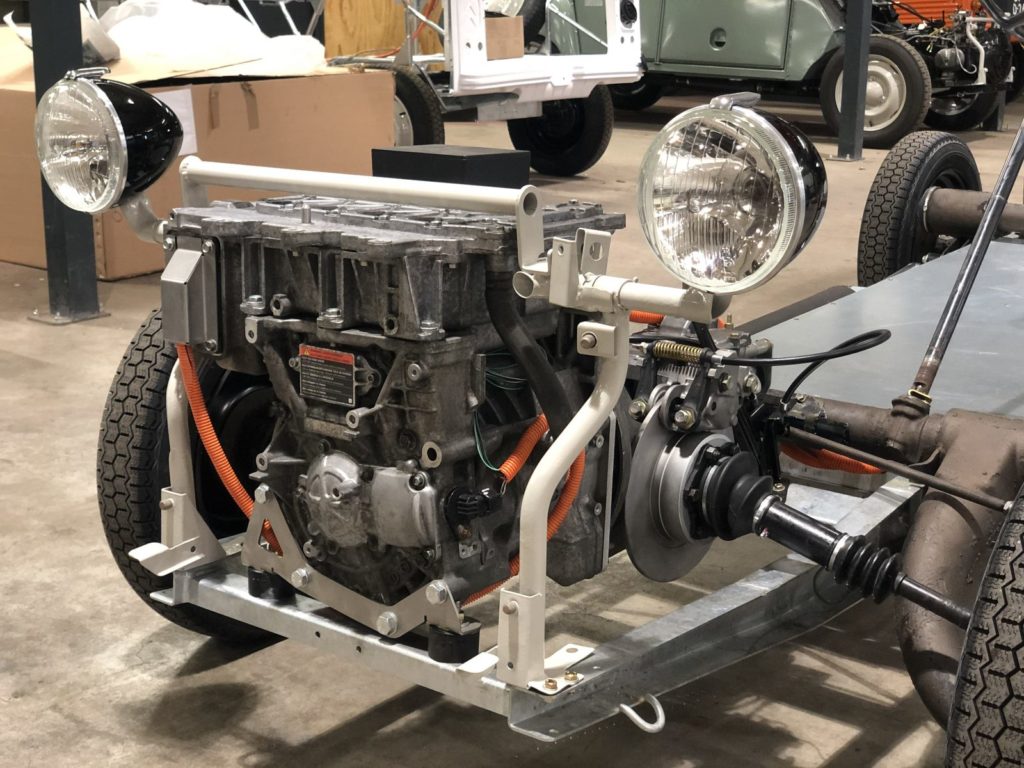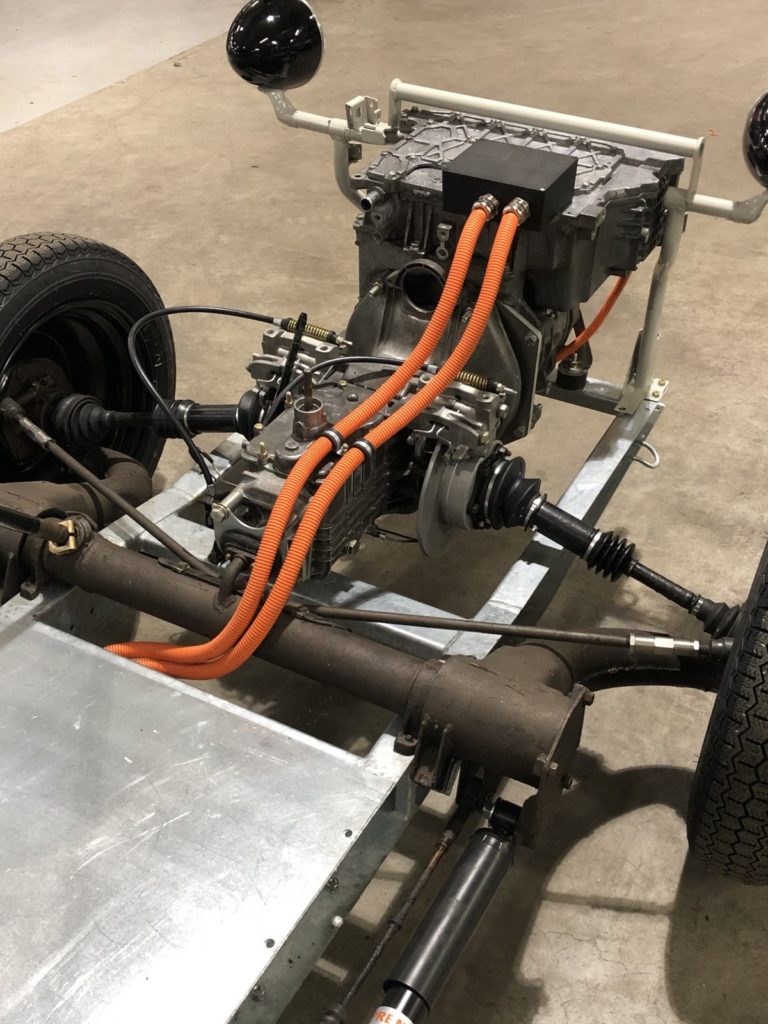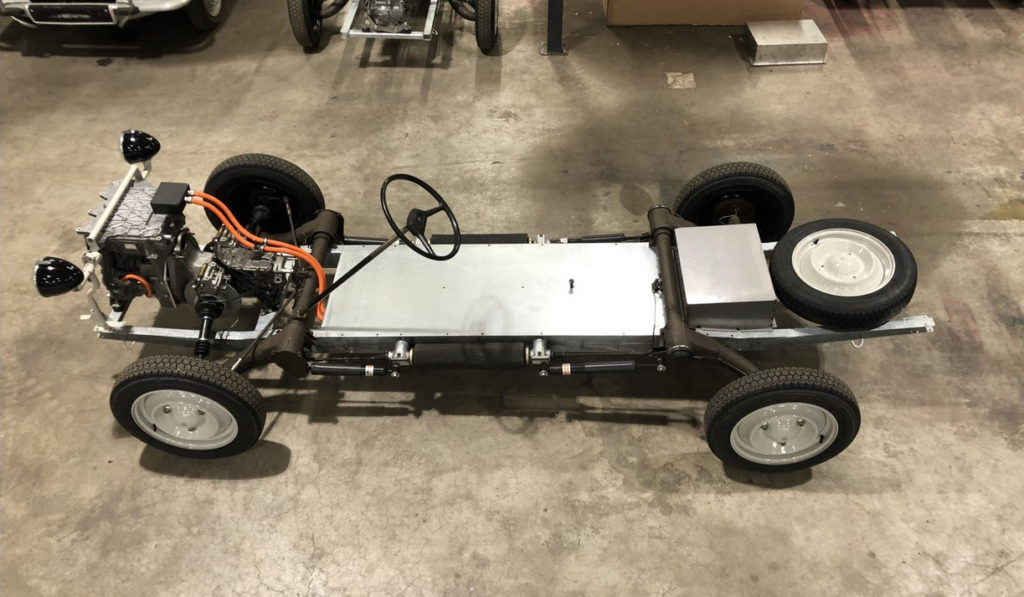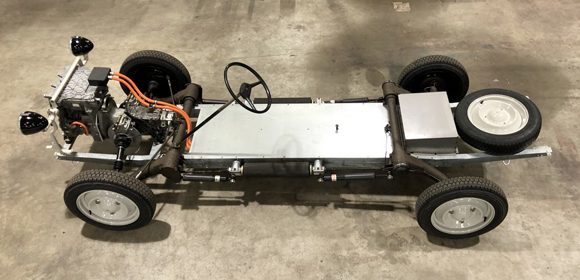While Stellantis announced last week that it will begin offering totally electric vehicles in new vehicles of all model ranges and across all its brands by 2023, there is one way to beat the them to punch and drive an electric Citroën now, other than an Citroën AMI 100% Electric (which you can’t get in North America anyway).
In an ongoing quest to electrify the 2CV, one company in The Netherlands, Sander AAlderink 2CV Garage, has managed to make use of the cavity section of the frame to pack in power that makes going the EV route practical. The electric engine they use is from a Nissan Leaf.

Initially the company offered an EV solution where the batteries were fitted where the tank and the spare wheel used to be, but more batteries couldn’t be added without losing passenger seats. With the 2CV chassis having a closed hollow box in the middle, they pursued packing energy into it, but that had its challenges — like finding a battery size that would fit.

Sander AAlderink 2CV Garage tried making a power pack, similar to what is found in Tesla and other EVs, composed of a kind of pen-lite batteries. Spot welding them to each other turned out to be technically difficult and potentially unreliable and having it done by a reputable company was not affordable.
They found a type of battery on the market that used lithium-iron phosphate cells and was compact enough to fit into the hollow volume of the frame, yet quite energy-dense while also being relatively low weight. And with a 5-year warranty, even better!
They created a custom frame as the original one has some reinforcements in the way and some other structural drawbacks.

With the new configuration, the largest portion of the batteries is in the central part of the chassis, and an additional small pack is placed where the gas tank used to be. The center of gravity is very low and more forward. Even with a weight gain of up to 200 kg (depending on the battery amount for desired range), handing is still quite acceptable.
They can put enough batteries in it to reach a range of 250km, with 37kWh. That can be scaled back opting for a 32 or 27kWh battery packs, with a 220 or 190km range respectively.
All packs can be combined with a fast charger, so charging to one third of the packs’ capacity can occur in just 20 minutes.
Sander AAlderink 2CV Garage can do a 2CV EV conversion as part of a restoration, or a build what they market as “2cvE” entirely to your wishes. They also offer just converting an existing 2CV to EV . Depending on the choice of package, the original chassis can be used or replaced by they EV chassis. Note though that they insist on doing the EV conversion. No home-mechanic options for do-it-your-selfers!
As for costs, these are the prices as of April 20, 2021:
| PRICES | CONVERSION | prices subject to change | |
| . | |||
| POWER | RANGE | USED/NEW | PRICE incl btw |
| 17kWh | 120km | used | €22.000,- |
| 27kWh | 190km | new | €26.100,- |
| 32kWh | 220km | new | €28.200,- |
| 37kWh | 250km | new | €30.000,- |
| EV-chassis | €1.500,- | ||
| Heater | price on request | ||
| Fast charging | price on request | ||
| Several options available | price on request |
So if you would like to convert your 2CV, why not ship it to The Netherlands, have them convert it, drive it around Europe for a nice vacation, (before or after the conversion) and ship it back home — electrified!
If you would like to know more, or even take a test drive in a 2cvE, email: sander@2cvgarage or call + 31 75 6421258.


Hello Sander from sw florida usa. I am very much interested in doing one of my azu model Citroën cars to all electric. I follow you and the shoppe and wondering if you know of anyone to do conversions in america? I look forward to hearing from you if you can help. Kindest regards, Louis Philippe 🇫🇷 (.*\=/*.)
Hi there,
a small correction is probably needed regarding the design of the chassis used in Sander’s electric conversions since the Autumn of 2019.
It is not of OE Citroen design, instead it’s one of my SLC chassis, on the market since 1994 with over 2,800 sold to date ( December 2024), including exports to 15 countries worldwide.
https://flic.kr/p/2o4EcWp
https://flic.kr/p/2khU72j
I’d love to see a two seater 2cv hybrid by putting one ev hub motor wheel centre rear. Change the gears for motorway speeds. Short range battery Ev for acceleration and city driving. A small petrol tank above the engine and a high output alternator. maybe for use with a Lomax style body or 2cv front end with a Bugatti style rear.
am I bonkers or could it be done?
Thank you
Steve